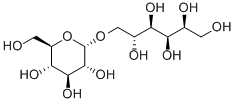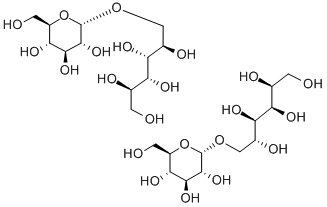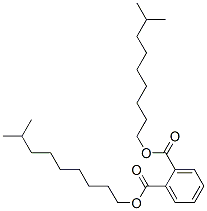Isodecanol
- CAS NO.:25339-17-7
- Empirical Formula: C10H22O
- Molecular Weight: 158.28
- MDL number: MFCD00044085
- EINECS: 246-869-1
- SAFETY DATA SHEET (SDS)
- Update Date: 2025-12-17 09:50:04

What is Isodecanol?
Chemical properties
Colorless liquid.Insoluble in water. Combustible.
The Uses of Isodecanol
Isodecanol is a useful component for anti-wear lubricating oil.
The Uses of Isodecanol
Antifoaming agent in textile processing.
Definition
Mixed isomers.
Production Methods
Isodecyl alcohol, or the C10 oxo alcohols, are made in the oxo process by reacting nonenes with carbon monoxide and hydrogen in the presence of a catalyst, followed by hydrogenation. The commercial product typically consists of trimethyl-1-heptanols and dimethyl-1-octanols; the composition and CAS registry number depend on the olefin feedstock.
Production Methods
Isodecyl alcohols are a mixture of alcohols produced by the oxo process in which undecenes are reacted with carbon monoxide and hydrogen in the presence of a catalyst, followed by hydrogenation . They are also prepared by other processes, including the Ziegler process that involves oxidation of trialklylaluminum compounds. Two of the major isomers found in the commercial product are trimethyl- 1-nonanols and dimethyl-1-decanols; the composition andCAS registry number depend on the olefin feedstock. These alcohols are used in producing phthalates and in detergents.
General Description
Colorless liquid with a mild alcohol odor. Floats on water.
Reactivity Profile
Isodecanol attacks plastics. REF [Handling Chemicals Safely, 1980. p. 236]. Acetyl bromide reacts violently with alcohols or water, [Merck 11th ed., 1989]. Mixtures of alcohols with concentrated sulfuric acid and strong hydrogen peroxide can cause explosions. Example: An explosion will occur if dimethylbenzylcarbinol is added to 90% hydrogen peroxide then acidified with concentrated sulfuric acid. Mixtures of ethyl alcohol with concentrated hydrogen peroxide form powerful explosives. Mixtures of hydrogen peroxide and 1-phenyl-2-methyl propyl alcohol tend to explode if acidified with 70% sulfuric acid, [Chem. Eng. News 45(43):73(1967); J, Org. Chem. 28:1893(1963)]. Alkyl hypochlorites are violently explosive. They are readily obtained by reacting hypochlorous acid and alcohols either in aqueous solution or mixed aqueous-carbon tetrachloride solutions. Chlorine plus alcohols would similarly yield alkyl hypochlorites. They decompose in the cold and explode on exposure to sunlight or heat. Tertiary hypochlorites are less unstable than secondary or primary hypochlorites, [NFPA 491 M, 1991]. Base-catalysed reactions of isocyanates with alcohols should be carried out in inert solvents. Such reactions in the absence of solvents often occur with explosive violence, [Wischmeyer(1969)].
Health Hazard
Direct contact with skin can produce irritation.
Chemical Reactivity
Reactivity with Water No reaction; Reactivity with Common Materials: No reactions; Stability During Transport: Stable; Neutralizing Agents for Acids and Caustics: Not pertinent; Polymerization: Not pertinent; Inhibitor of Polymerization: Not pertinent.
Properties of Isodecanol
| Melting point: | -60°C |
| Boiling point: | 215-225 °C |
| Density | 0.838 g/mL at 20 °C |
| refractive index | n20/D 1.440 |
| Flash point: | 95 °C |
| storage temp. | Refrigerator |
| solubility | Benzene (Sparingly), Chloroform (Slightly) |
| form | Oil |
| color | Colourless |
| Odor | Weak alcoholic. |
| EPA Substance Registry System | Isodecanol (25339-17-7) |
Safety information for Isodecanol
Computed Descriptors for Isodecanol
New Products
Indole Methyl Resin tert-butyl 9-methoxy-3-azaspiro[5.5]undecane-3-carboxylate Boc-His(Boc)-OH 2-CTC Resin 4-Chloro-7-tosy1-7Hpyrrolo[2,3-d]pyrimidine 5,7-Dibromo-1H-indole 2,5-dichloro-N-hydroxy-4,6-dimethylpyridine-3-carboximidamide 2,2-Dimethoxy-7-azaspiro[3.5]nonane hydrochloride 4-chloromethyl-5-methyl-1,3-dioxol-2-one (DMDO-Cl) R-2-BENZYLOXY PROPIONIC ACID 1,1’-CARBONYLDIIMIDAZOLE 1,1’-CARBONYLDI (1,2-4 TRIAZOLE) N-METHYL INDAZOLE-3-CARBOXYLIC ACID 4-((2-hydroxyethyl)thio)benzoic acid 1-(TERT-BUTOXYCARBONYL)-2-PYRROLIDINONE Methyl 6-methylnicotinate 3-Pyridineacrylic acid tert-Butyl carbazate TETRAHYDRO-2H-PYRAN-3-OL 2-((4-morpholinophenylamino) (methylthio) methylene) malononitrile 3-(4-morpholinophenylamino)-5-amino-1H-pyrazole-4-carbonitrile 2,4-dihydroxybenzaldehyde 1,3-Diethyl-1,3-Diphenylurea Methyl 2-methylquinoline-6-carboxylateRelated products of tetrahydrofuran








You may like
-
 Isodecanol, 99% CAS 25339-17-7View Details
Isodecanol, 99% CAS 25339-17-7View Details
25339-17-7 -
 Isodecanol pure CAS 25339-17-7View Details
Isodecanol pure CAS 25339-17-7View Details
25339-17-7 -
 Isodecanol pure CAS 25339-17-7View Details
Isodecanol pure CAS 25339-17-7View Details
25339-17-7 -
 Pyridine 99.5% HPLC /UV SpectroscopyView Details
Pyridine 99.5% HPLC /UV SpectroscopyView Details
110-86-1 -
 Piperazine Spot supply, best priceView Details
Piperazine Spot supply, best priceView Details
110-85-0 -
 Dibutyl PhthalateView Details
Dibutyl PhthalateView Details
84-74-2 -
 Imidazole Spot supply, competitive priceView Details
Imidazole Spot supply, competitive priceView Details
288-32-4 -
 Thiourea 99% ARView Details
Thiourea 99% ARView Details
62-56-6
